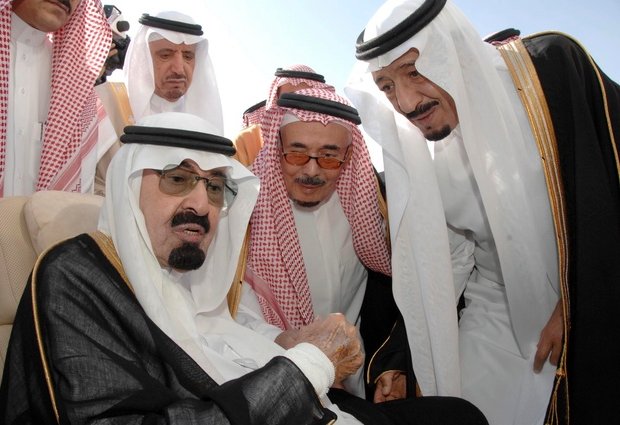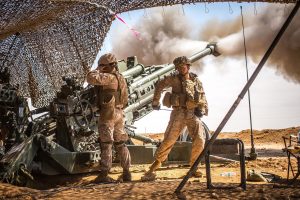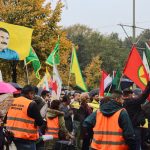by Thomas W. Lippman
An Arabic-speaking friend who has been doing business in Saudi Arabia and the Gulf for decades and seems to know everyone there invited me to lunch the other day. He wanted to know if I could make sense of developments in Saudi Arabia over the past six months.
I almost laughed — he knows more before he gets out of bed in the morning than I ever will. But it was a measure of the collective bafflement of people whose business it is to know what is going on in the kingdom that my friend turned to me. His was the sixth such request I had fielded recently. The others were from diplomats at two foreign embassies, representatives of an international industrial conglomerate and a giant oil company, and an Obama administration official who has access to classified material.
It was flattering to be sought out by such people, who normally would be sources for me rather than the other way around. I would have liked to help them if I knew the answers, but the conversation was not reassuring. All this highlights how much Saudi Arabia, traditionally cautious and understated, has thrown knowledgeable people into confusion by its actions and decisions over the past several months. It is no secret that the leaders of Saudi Arabia have been upset with the United States over several policy differences in the past year; it’s less clear if the Saudi leaders understand how difficult it has become for their friends outside the kingdom to discern where they want to go and how they plan to get there.
The fundamental objectives of Saudi strategic policy are well known: contain Iran, put an end to the Assad regime in Syria, stamp out the Muslim Brotherhood, fight Islamic extremism, forge coherence out of the squabbles within the Gulf Cooperation Council (GCC), and encourage the creation of an independent Palestinian state alongside Israel. What’s harder to discern is how the kingdom’s actions and decisions over the past six months have advanced this agenda.
This period of turbulence seems to have begun with the decision last November to reject the seat on the United Nations Security Council that the kingdom had sought for years. The Saudis said the U.N. had failed in its duty to stop the carnage of Syria’s civil war and to bring about a negotiated settlement between the Palestinians and Israel. It is true that those conflicts remain unresolved, but it was and is hard to see how Saudi Arabia’s decision made any difference. The Syrian war had been going on for some time, and the plight of the Palestinians dates to 1948; were the Saudis unaware of that while they were avidly pursuing the seat they rejected?
In the months since then, Saudi-watchers have been confronted with one surprising development after another. These include, in no particular order:
- The dismissal of Prince Bandar bin Sultan as director of intelligence. He had previously been removed as director of Saudi efforts to help the Syrian rebels, who are not winning the war, and he had failed in an apparent attempt to persuade Russia to abandon Bashar al-Assad. He had also been ill. Which, if either, was the real reason?
- The withdrawal by Saudi Arabia, the United Arab Emirates, and Bahrain of their ambassadors to Qatar, a split within the six-member GCC that seems to have arisen over differences in policy toward Egypt. The Saudis and Emiratis in particular have been supporting the military government headed by Abdel Fattah al-Sisi, a relentless foe of the Muslim Brotherhood, while the Qataris have been critical of the Egyptian military’s ouster of an elected Brotherhood government headed by Mohammed Morsi. Qatar’s public position is that it does not support the Brotherhood as an organization but stood by the outcome of a valid election. After the ambassadors were pulled, the four countries announced an agreement to end their dispute, but the ambassadors have not returned to Doha.
- An invitation to Iranian Foreign Minister Javad Zarif to visit Saudi Arabia. Given the Saudis’ penchant for blaming Iran for all the region’s troubles, and their vigorous opposition to the U.S.-led negotiations over Iran’s nuclear program, this initiative came as a surprise. Not long before, Saudi Arabia’s new ambassador to Iran, Abdul Rahman al-Shehri, went to visit former Iranian president Ali Akbar Hashemi Rafsanjani, an advocate of improved bilateral relations, and was photographed kissing his hand. What does that portend, if anything?
- The elevation of Prince Muqrin bin Abdul Aziz, who had been dismissed as director of national intelligence when Prince Bandar got that job, to the previously non-existent position of “deputy crown prince.” Was this a preemptive strike by King Abdullah to ward off possible dissension within the royal family over the line of succession, or did it indicate that consensus has already been achieved and the family had lined up behind Muqrin? The official announcement of this royal decree contained a tantalizing bit of information: it said Muqrin had been elevated with the approval of “an overwhelming majority of more than three-fourths” of the Allegiance Council, the group of 35 princes created by King Abdullah to deal with the succession question. That means the decision was not unanimous. Who voted no, and why?
- A shakeup of senior military leadership and of positions in the Defense Ministry. The most interesting piece of this was probably the replacement of Prince Salman bin Sultan, half-brother of the ousted Bandar, as deputy minister of defense. Analysts in the Gulf described the changes as the replacement of hard-liners on Syria and Iran by more moderate personalities, but because the Saudi decision-making process is entirely opaque and the people involved never talk about it to outsiders, it may be quite a while before we can discern the significance of this, if any.
- Staging an enormous, elaborate display of the kingdom’s military forces, complete with ballistic missiles, combat jets, and an estimated 130,000 troops, at Hafr al-Batin, in the northeastern corner of the country near the borders with Iraq and Kuwait. It was impressive, but what was the message, and who was the target audience? Senior Saudi defense officials were quoted in the local press as saying the kingdom has no intention of attacking anyone and was simply showcasing its preparedness. Perhaps so, but why now?
This list is not complete, but it is instructive. People outside Saudi Arabia who try to follow the kingdom’s affairs, and I include myself among them, should remind ourselves at all times how little we really know. This is not a country where the king and senior princes have to explain themselves, and they usually don’t. Even when they do, their explanations may or may not be the whole truth. It’s not as if a committee of the legislature could subpoena them. What all these pieces add up to may become clear over time — or maybe not. Meanwhile we should be wary of drawing conclusions.






To Sharkbait, Score one for the Gipper, you do have a way with the written word[s].